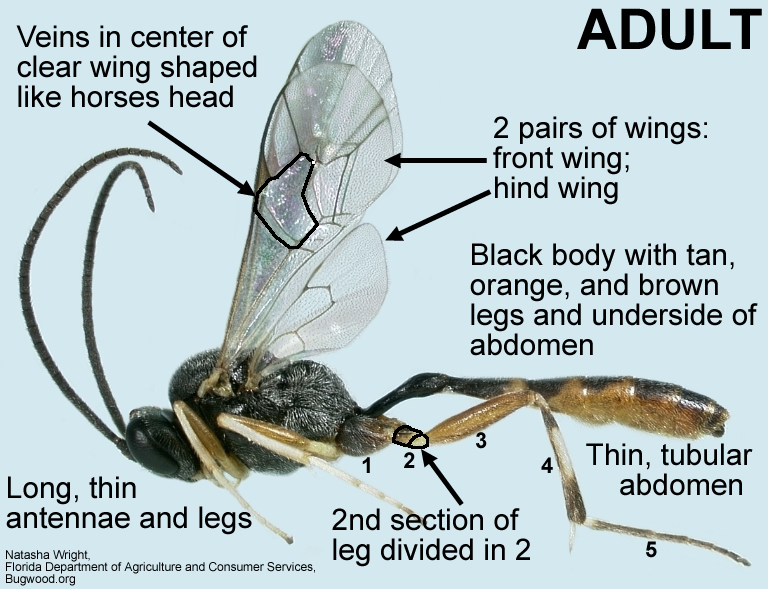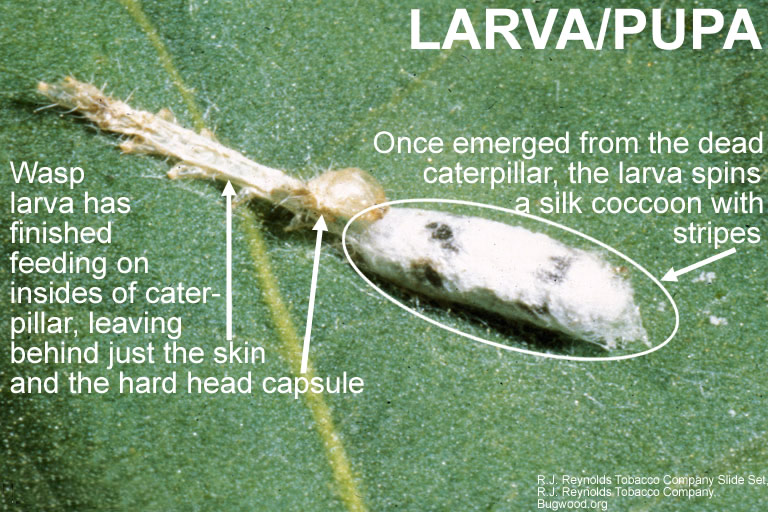Campoletis Wasp
go.ncsu.edu/readext?563391
en Español / em Português
El inglés es el idioma de control de esta página. En la medida en que haya algún conflicto entre la traducción al inglés y la traducción, el inglés prevalece.
Al hacer clic en el enlace de traducción se activa un servicio de traducción gratuito para convertir la página al español. Al igual que con cualquier traducción por Internet, la conversión no es sensible al contexto y puede que no traduzca el texto en su significado original. NC State Extension no garantiza la exactitud del texto traducido. Por favor, tenga en cuenta que algunas aplicaciones y/o servicios pueden no funcionar como se espera cuando se traducen.
Português
Inglês é o idioma de controle desta página. Na medida que haja algum conflito entre o texto original em Inglês e a tradução, o Inglês prevalece.
Ao clicar no link de tradução, um serviço gratuito de tradução será ativado para converter a página para o Português. Como em qualquer tradução pela internet, a conversão não é sensivel ao contexto e pode não ocorrer a tradução para o significado orginal. O serviço de Extensão da Carolina do Norte (NC State Extension) não garante a exatidão do texto traduzido. Por favor, observe que algumas funções ou serviços podem não funcionar como esperado após a tradução.
English
English is the controlling language of this page. To the extent there is any conflict between the English text and the translation, English controls.
Clicking on the translation link activates a free translation service to convert the page to Spanish. As with any Internet translation, the conversion is not context-sensitive and may not translate the text to its original meaning. NC State Extension does not guarantee the accuracy of the translated text. Please note that some applications and/or services may not function as expected when translated.
Collapse ▲- Common Name: Campoletis Wasp
- General Category: Parasitoid
- Taxonomic Classification: Hymenoptera: Ichneumonidae
- Scientific Name: Campoletis sonorensis
Description
These wasps are relatively common in open, agricultural areas where they attack the caterpillars of a variety of pest moths. However, like so many parasitic insects ,unless you know how to find them they are unlikely to be noticed. Adults of ichneumonid wasps are known to feed on nectar from flowers, and this may be the most likely place they would be spotted by non-entomologists. These wasps are also well known as model insects for molecular studies of polydnaviruses, viruses that are injected along with parasitic wasp eggs into host larvae by ichneumonid and braconid parasitic wasps to regulate host physiology during development of wasp larvae.


Identification
Review the images for tips on how to identify these predators.
Adults
Medium sized wasps about 0.5 inch long. Like all Hymenoptera (bees, wasps, ants), each of two pairs of wings is held together by a row of tiny hooks. Like all wasps belonging to the family Ichneumonidae, they have veins in the front wings shaped like a horses head, and the second leg segment is divided. They have long antennae and legs and a thin body with a tubular abdomen. There are many species of wasps in the family Ichneumonidae, and the characteristics that are used to separate them are esoteric. However, if a wasp emerges from a fall armyworm or tobacco budworm caterpillar, and looks like the above photos, there’s a good chance it is C. sonorensis.
Larvae
Because the grub-like larvae develop inside caterpillar hosts feeding on progressively more vital tissues, they cannot be seen. However, within a couple of weeks of parasitism (time dependent on temperature), larvae will chew through the caterpillars skin to emerge and spin a cocoon often beside the now dead caterpillar host. The white cocoons have two indistinct dark stripes, one at either end, that give them a ‘bird poop’-like appearance. This contrasts with cocoons produced by wasps in the family Braconidae, that have no stripes and are usually white (see example).
Value in Pest Management
Campoletis sonorensis wasps are known to contribute to natural control of some important pest caterpillar populations, especially those of the fall armyworm and tobacco budworm. They are not sold commercially.
Origin and Distribution
Native, throughout much of North America.


